So you’ve landed in Iceland, map in hand (ok, it’s 2025, maybe it’s chatGPT having a casual pint with Google Maps instead), the wind already threatening to blow it away, and you’re thinking, “Surely I can just flop my tent anywhere, wake up beside a my glacier of choice, and boil porridge on a camp stove while puffins cheer me on?” Charming idea.
But alas, no, you absolutely cannot pitch just anywhere (bit of a spoiler for the guide, I’m aware). Iceland may look like a vast, open wilderness, but it’s also a patchwork of fragile ecosystems, private farmland, and protected areas where a careless tent can cause long-term harm, and not just because farmers don’t want to see your face (or boat for any cockneys reading this).
In this guide, I’ll walk you through the actual laws, the quirks of local etiquette, and the practicalities that will make your camping trip both legal and glorious, without leaving you with a hefty fine or a furious farmer for company (that can sour more than just the kjötsúpa).
Why That Rumour of “Pitch Anywhere” Is a Myth
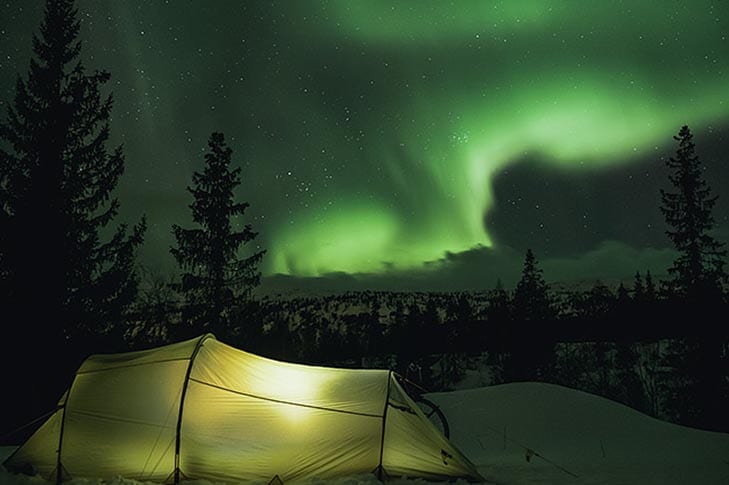
Remember that clip from years back about ‘free camping’ in the Icelandic wilderness? That was a different era, when visitor numbers were a fraction of what they are today and regulation was still catching up (most of you, like me, probably barely knew of Iceland’s existence back then).
Since tourism ballooned in the 2000s, so have the rules, and not without good reason. That old “anyone, anywhere” notion is about as accurate as volcanoes erupting daily (bad timing if you’re reading this during a common Reykjanes eruption).
Iceland protects its delicate terrain. There’s moss that takes decades to regrow, volcanic ash plains that blow away if disturbed, and bird nesting grounds easily destroyed by careless feet, so wild camping is now strictly contained and actively enforced.
The myth persists mostly among backpackers who’ve stumbled across half-baked Reddit threads or outdated guidebooks. But today, the law is clear and locals are vocal about protecting their land. And rightly so.
Iceland’s landscapes are stunning, but fragile, and the pressure of millions of annual visitors has forced the government to tighten restrictions. A careless tent peg in the wrong patch can leave scars that won’t heal in your lifetime (a bit like how I felt after the shockingly rubbish ending to Lost or Game of Thrones).
It’s not the kind of legacy you want, is it? In short, Iceland is open to explore, but only if you respect the boundaries that keep it beautiful for the next traveller.
Law and Order: What Icelandic Regulation Says
The law is quite specific, and while it might look like a straightforward permission slip, it comes with important caveats and historical context. You may pitch a traditional tent under certain conditions, laid out in Act no. 60/2013 on Nature Conservation (yes, I’m sure you’re raring to get your teeth into some local legal jargon).
This act was introduced in part to manage the explosive growth of tourism in the last two decades and to protect rural landowners from a free‑for‑all of campers. I suspect there were really just too many bad renditions of Kum-Ba-Yah for anyone to tolerate further.
- In inhabited areas along public routes, wild camping is generally not allowed unless (the best word when you’re on the road) you’ve got explicit permission from the landowner. Even on uncultivated land, you can’t just pop up a tent if there’s a designated campsite nearby, which, in most towns and villages, there usually is. In practice, this means you can’t just set up outside a village when a perfectly good paid campsite is around the corner.
- In uninhabited areas, you may pitch a small tent for one night on uncultivated public land, as long as the area isn’t protected and there’s no signage or local regulation prohibiting it. This makes the most sense in regions like the highlands or remote coastlines. But always check for restrictions, and don’t assume isolation equals permission (a rule I wish applied to some of my neighbours who seem to take up 99% of the stairwell).
- Outside public routes, tent camping is sometimes allowed on uncultivated land, but many areas (especially national parks, nature reserves, and private land) have special rules that override the general law. Iceland’s landscape may be wild, but its regulations aren’t. And if a ranger (no, not Aragorn…Viggó is Norwegian) catches you breaking them, “I didn’t know” won’t get you out of a fine in a currency that almost certainly will confuse you.
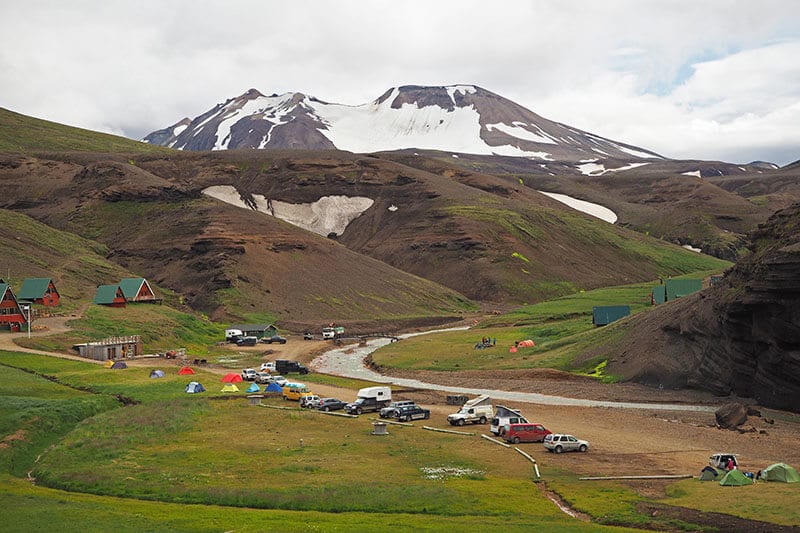
But if you’re planning to stay longer, bring more than three tents, camp on cultivated land, or use a campervan (ahem, hint!) then you must get permission from the landowner. Landowners are within their rights to refuse, and many have posted clear signs. My advice: unless you want to bring out your inner Will McKenzie with the rulebook out to a disgruntled local, just head to the campsites.
It sounds a bit like a legal spaghetti bowl, but really it’s common sense: if there’s a campsite nearby, use it. If you’re in the middle of nowhere, use discretion and leave no trace (that isn’t a hint to murder your travel companion). And remember: fines for breaking these rules can be hefty, sometimes thousands of euros/dollars/pounds (insert your specific currency), and the authorities have been increasingly vigilant in recent years.
Wild Camping Rules (Tent Only, No Campervans)
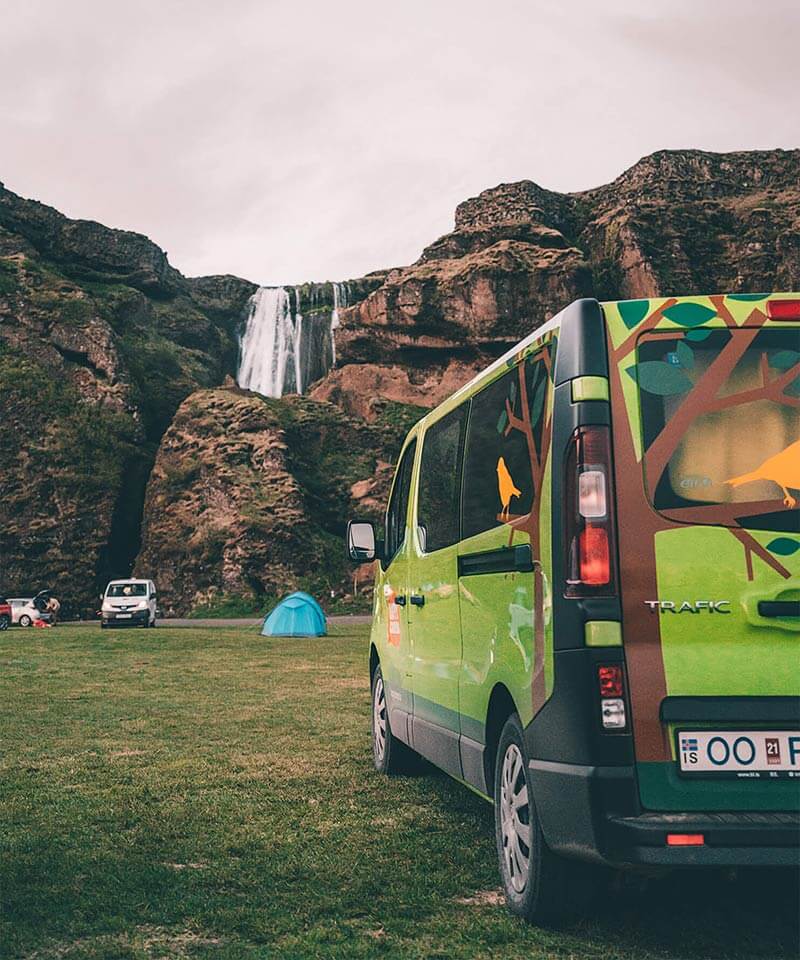
To be clear: wild camping in a trailer or campervan is a no-go unless you’re on a proper campsite, even in the middle of nowhere. The days of just pulling over and calling it a night are long gone. Police do patrol (especially the South Coast), fines are issued, and they aren’t small. Reports of 100.000 kr + (c€1,000 – €2,000) penalties are not unusual, especially in tourist hotspots, and trust me, I’ve seen more for marginal speeding.
Traditional tents get more leeway, yes, but even then, the framework is strict and rooted in environmental protection, and you have to basically be in a really tragic situation:
- Only one-night stays are allowed, intended as an emergency stop rather than a cheap holiday solution.
- Up to three tents max, keeping crowds to a minimum and avoiding ad-hoc festivals in farmers’ pastures.
- Permission required for extended stays or bigger groups, and many landowners will say no if they fear damage or disruption.
Basically, if you and a couple of friends are backpacking and need an emergency overnight stop, that’s permitted (as long as you haven’t planned it). But rolling up with twelve friends and treating someone’s field as your own private Glastonbury campsite? Absolutely not (after all, we can’t get Mick Jagger or Paul McCartney there in time).
Rangers (landverðir) and landowners are increasingly proactive in moving people on, and you could face a frosty reception or a fine before you’ve finished inflating your mattress.
For campervan travellers, Iceland’s campsites are the only option, and fortunately, there are over 200 across the country, ranging from basic fields to sites with hot showers, communal kitchens, laundries, and sometimes even some cheeky extras suitable for couples or families.
Crucially, you’ll also avoid the risk of angry landowners knocking on your window at 2 a.m. demanding you move along (and Icelanders can be an odd combination of passive and direct at the same time).
Protected & Special Areas: Historic No-Camping Zones

Some areas simply forbid any overnight stay outside designated sites, no discussion. The Icelandic Environment Agency provides a long list of these, and the rules are backed up by rangers who do regular patrols and issue fines. Examples include:
- Dynjandi waterfall in the Westfjords, where erosion is a constant threat
- The lava fields of Dimmuborgir near Lake Mývatn, a unique geological formation often trampled by visitors
- Much of Vatnajökull National Park, where glaciers, volcanic areas, and sensitive wetlands demand protection
- Þingvellir National Park, part of the Golden Circle, which sees thousands of visitors daily
Camping restrictions exist because these areas are especially sensitive or heavily visited, and a single careless group can do damage that lasts decades.
The idea is to avoid having hordes of tents turning iconic beauty spots into eyesores, overwhelming fragile ecosystems, and spoiling the experience for others. Save the hordes for the Viking raids (not a bad phrase to call the rangers issuing fines, come to think of it).
And honestly, would you want to gaze at Goðafoss waterfall only to find a dozen nylon domes ruining the shot? Or worse, trampled moss and litter where there should be wildflowers (or feet of snow without litter)? Exactly.
Highlands & Walking Trails: Your Tent-Friendly Exceptions
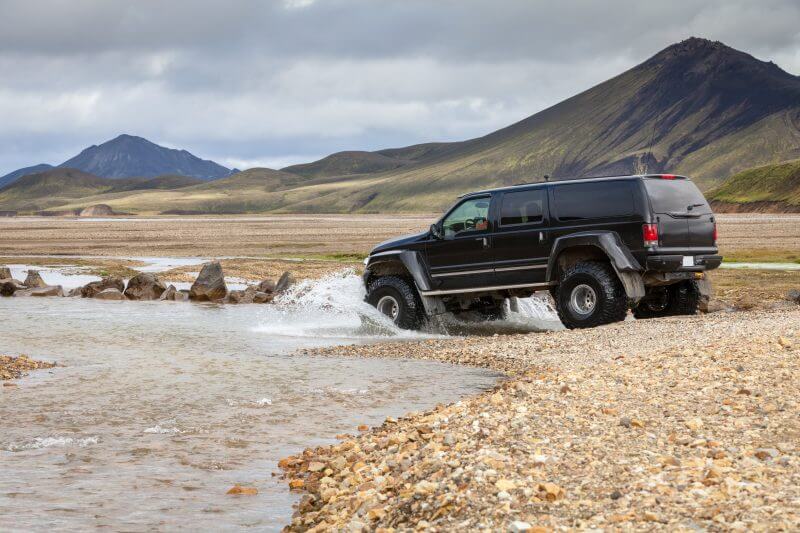
If you’re hiking routes like Laugavegur or exploring remote highlands, public right law (yes, like the Nordic roam-right) lets you pitch your tent for one night in non-urban, non-protected areas. This allowance is designed to give long-distance trekkers some flexibility, but it is narrower than many people assume. Let’s get into the weeds (not the moss) of the detail:
- It’s legal, but best avoided, unless the next campsite is too far and you’re desperate, as even “permitted” wild camping can cause lasting impact.
- Groups and extended stays? Again, permission required, and authorities in the highlands will check during peak trekking months. If you’re daft enough to illegally trek there off-season, then you’d be wishing you bumped into them.
Trekkers love the freedom, but the Icelandic Highlands are vast and unrelenting. Unless you’re seriously kitted out, camping wild up there is not for the faint-hearted. Winds howl, rain lashes, and temperatures plummet even in July.
Romantic, yes. Comfortable? Not so much. And this comes from the experience of a man who once thought of this mistakenly as a romantic weekend of fun (more like bootcamp and bad hair).
Add to this the fact that phone signal is patchy, weather shifts in minutes, and river crossings can become treacherous overnight, and you begin to see why authorities encourage hikers to stick to designated huts and campsites whenever possible.
Carrying a GPS, notifying SafeTravel of your plans, and respecting marked camping areas will turn a risky gamble into an unforgettable, but safe, adventure (and if you’re wondering, she is still with me after that blunder).
One-Night Only? Group Sizes? Details That Matter
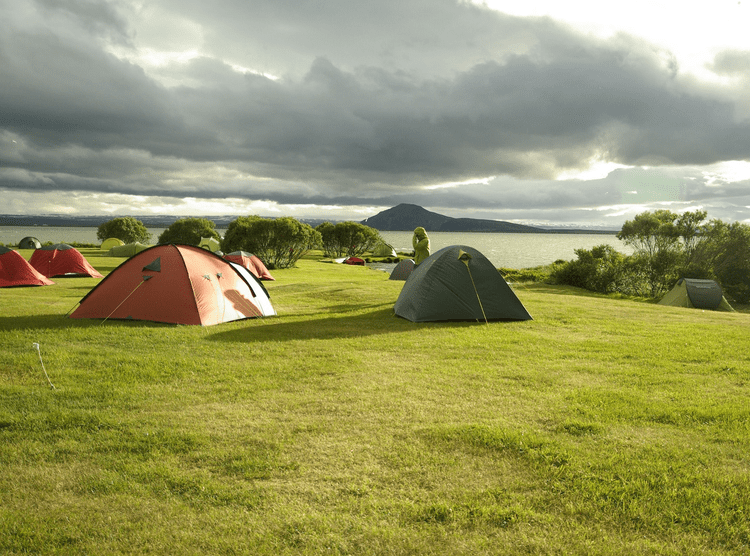
That ‘one night only’ rule (no, not that one) is real, and it’s enforced more often than visitors realise. Want more than a single night? You’ll need landowner consent. Planning to pitch more than three tents? Again, consent.
It’s simple enough, but many travellers get caught out by assuming Iceland is like Scotland with its right-to-roam, which, to me, having lived there less poetically meant carrying your excrement for days (not that great).
Not quite. Iceland’s rules are stricter because its terrain is far more delicate and its population smaller, meaning local communities feel the impact of rule‑breakers directly.
And for heaven’s sake, don’t camp right next to farms or houses. Imagine waking up to find strangers brewing instant coffee in your garden. It’s intrusive, disrespectful, and in some cases has led to formal complaints from landowners (sounds British, I know).
Farmers may call the police or demand you leave immediately, and fines for such behaviour can follow. If in doubt, move further into uncultivated land, check for signage, and when possible, ask permission. A quick conversation with a local can save you a world of hassle and might even lead to a better suggestion of where to stay (if you’re an open-minded individual).
Camping in a Campervan: Strictly Campsites
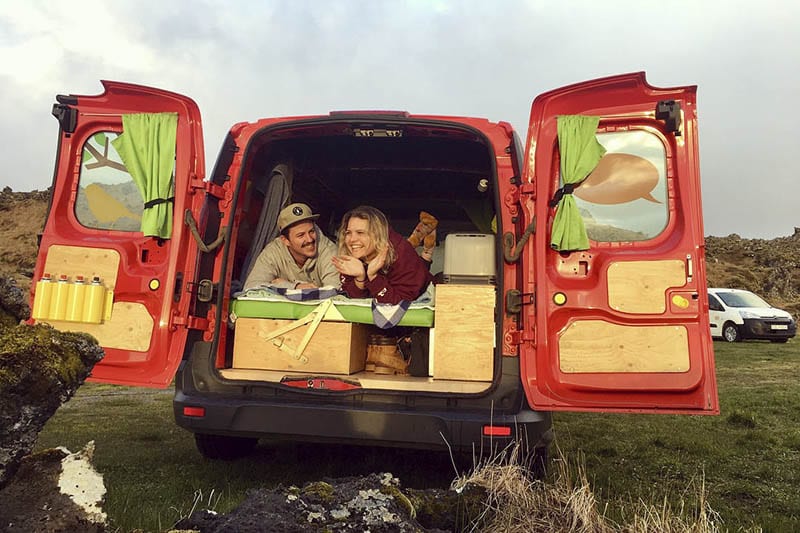
Wheels = campsite (welcome to our business plan). That is non-negotiable. Iceland’s regulations make a very sharp distinction between pitching a tent on foot and overnighting in a vehicle. Once you’re on wheels, the expectation is clear: you must use a designated camping ground.
- Campervans, tent trailers, motorhomes, caravans (you get the idea) must use designated camping grounds unless you’ve got written permission from the landowner, which is rarely granted outside family or personal contacts. And, let’s be honest, it’s hardly a major perk to sleep in a random field.
- Pulling over on the Ring Road for a snooze is not only illegal, it’s downright dangerous with fast traffic, limited shoulders, and unpredictable weather. Accidents have happened, and the police are quick to fine those parked illegally. And this goes double for Northern Lights chasing.
- The same goes for scenic lay‑bys or gravel tracks near farms. What looks like an inviting spot for your camper is usually private property or environmentally sensitive land. Just assume that if you ever see moss, you can guarantee a local is waiting to film you stepping on it with their iPhone to share in ‘you wouldn’t believe what they did’ Facebook groups.
The good news? Campsites are everywhere (I cannot reaffirm this enough). From Reykjavík to the remote Westfjords, from the Golden Circle to East Iceland, you’ll never struggle to find a safe and legal spot.
Pretty much all of them are inexpensive compared to hotels, and facilities range from basic fields with a toilet block to full‑service sites with hot showers, kitchens, the works. Some are tucked beside waterfalls, others near swimming pools or hiking trails, turning a simple overnight stop into part of the adventure itself.
Helpful Reddit Wisdom from Fellow Campers
Let Iceland’s practical campers weigh in, because sometimes it helps to hear the unvarnished truth from people who have actually tried it on the ground (research isn’t complete without claiming a fact you just spouted was actually from a reel, now is it?):
“Wild camping ‘within civilisation’ isn’t allowed… unless you’re hiking the highlands or… far from anywhere humans are.” (Reddit user)
“Legally… you can pitch a tent for 1 night anywhere except private property and national parks.” (Reddit user)
Other discussions highlight confusion between “legal” and “tolerated” (sounds like a discussion you’d have about living with someone with a Fire TV Stick). Some hikers report no issues when discreet, while others note rangers appearing within hours. The consensus? Be prepared to justify your choice if challenged, and never assume that a lack of signs equals permission (it’s simply just…a lack of signs).
Clear takeaway: if you’re on foot, away from farms and parks, and only for one night, that lonely meadow could be fair game in practice, though not guaranteed. On wheels (our peeps)? Not a chance, unless you enjoy chatting with the local police or paying fines that could fund a month or two in a proper campsite.
Tips for Happy (and Legal) Camping in Iceland
Planning saves your wallet and keeps you out of trouble. Here’s how:
Top Gear to Bring (and What to Skip)
- Lightweight 3-4 season tent, with strong pegs for Iceland’s famously rocky ground
- Sleeping bag rated for sub-zero nights (even in summer), plus a liner for extra warmth
- Gas stove (campfires are forbidden), and enough canisters since supply can be patchy outside Reykjavík
- Reusable water bottle (Icelandic tap water is the GOAT of tap waters, but streams aren’t always safe due to sheep grazing)
- A map or GPS with campsites marked, or just use our campsite guide
- Portable power bank or solar charger, because electricity can be scarce in the highlands (or on a hike, and you crave a Netflix break for some unknown reason)
- Waterproof clothing layers and gloves. Summer is not as warm as you imagine as this is a totally different latitude from Ibiza
- A head torch in autumn or winter, when daylight is short
Leave behind: firewood (useless, trees are rare), flip-flops (unless you fancy frostbite or maybe for the campsite shower), and excessive booze (alcohol is eye-wateringly expensive here and best enjoyed sparingly…ok, this is a bit tight, live a little it your holiday!) Also, skip disposable plastic cutlery or plates, and bring reusable ones to reduce waste (just to point out, we provide most of what you will need if you book with us…).
Leave-No-Trace to the Max
- Bin your litter, and consider carrying a portable toilet bag for highland treks if you cannot hold it until you reach the campsite facilities (or if you have my father’s bowels)
- Never camp on fragile moss or delicate vegetation. Pitch only on durable surfaces like gravel, sand, or grass already used for camping
- Stick to established paths and avoid creating new trails, even if it means a slightly longer walk
- Minimise campfire scars by not lighting open fires at all. Use stoves only
- Keep noise to a minimum; wild places are valued for their silence. If nothing else, think of the elves you’re p**sing off.
- Respect wildlife: avoid nesting birds, seal colonies, and grazing animals
Iceland prides itself on untouched nature, but that only lasts if we all behave. Treat the land as if you’re borrowing it from a friend. Because you are. And that friend will definitely notice if you return it scorched, trampled, or littered.
Why Happy Campers Makes It Easier
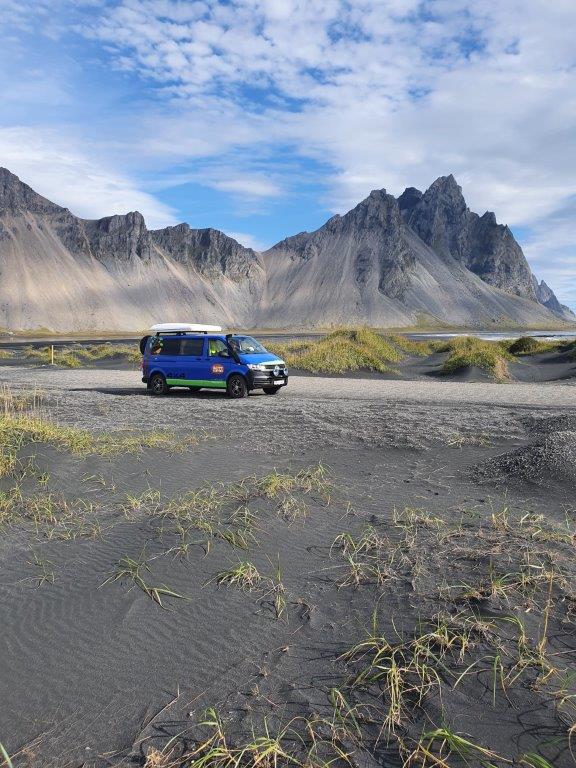
Here’s where things get clever. Instead of stressing about whether you’re legal in a ditch somewhere, just hire a Happy Campers campervan. Our campers are built for Icelandic roads and weather, making them more than just transport; they’re your home, kitchen, and shelter all in one.
- Flexible van hire means you obey the law and stay cosy, campsite or not. You’ll never have to wonder if you’re breaking the rules (you’ll know you are or not).
- No tent in freezing wind at midnight. Just park, cook, and kip, with heating and insulation to keep you snug.
- Our team knows the best campsites: the ones with fewer guests, secret saunas, and more picturesque Northern Lights viewing spots, and we’ll happily point you to them.
- We even share insider itineraries, from the Ring Road to North Iceland, plus lesser‑known gems like geothermal pools or coastal villages.
- Vans come stocked with all the essentials (can I get an amen?): Kitchen gear, bedding, and clever storage, so you can travel light and worry less about packing lists.
Why risk a fine, a night of misery, and soggy boots when you could have a heated van, a fridge full of snacks, and the freedom to chase the aurora or waterfalls at your own pace? Sounds better, doesn’t it.
Book Your Campervan, Not Your Stress
Ready to camp smart, stay legal, and actually enjoy your sleep? Get yourself a (and become a) Happy Camper. With us, you’ll get the comfort of a rolling home, insider knowledge of the best campsites, and the freedom to explore Iceland without worrying about these creepy rangers I’ve mentioned a ridiculous number of times by now. Book your perfect van, explore beyond the crowds, and leave the moss (and the fines) untouched.
Find your campervan today and make your Icelandic road trip as effortless as it is unforgettable. And keep it legal, please.
Back